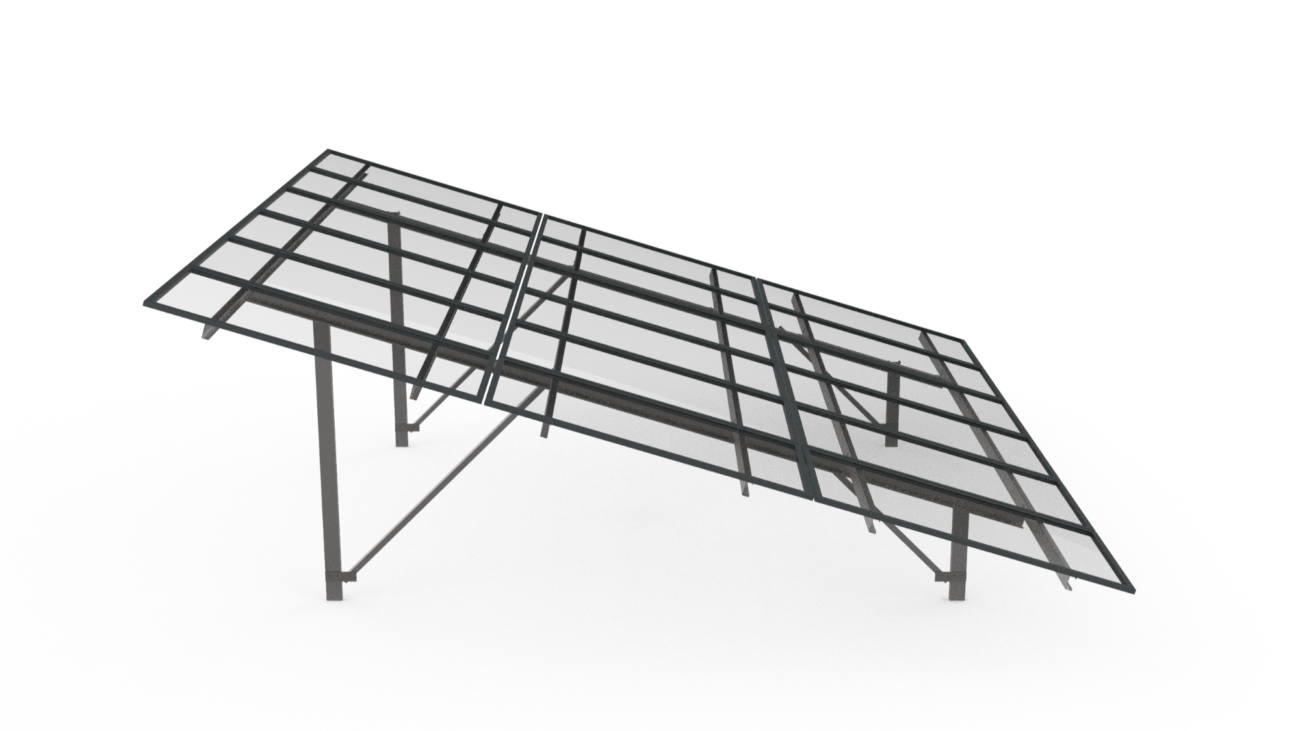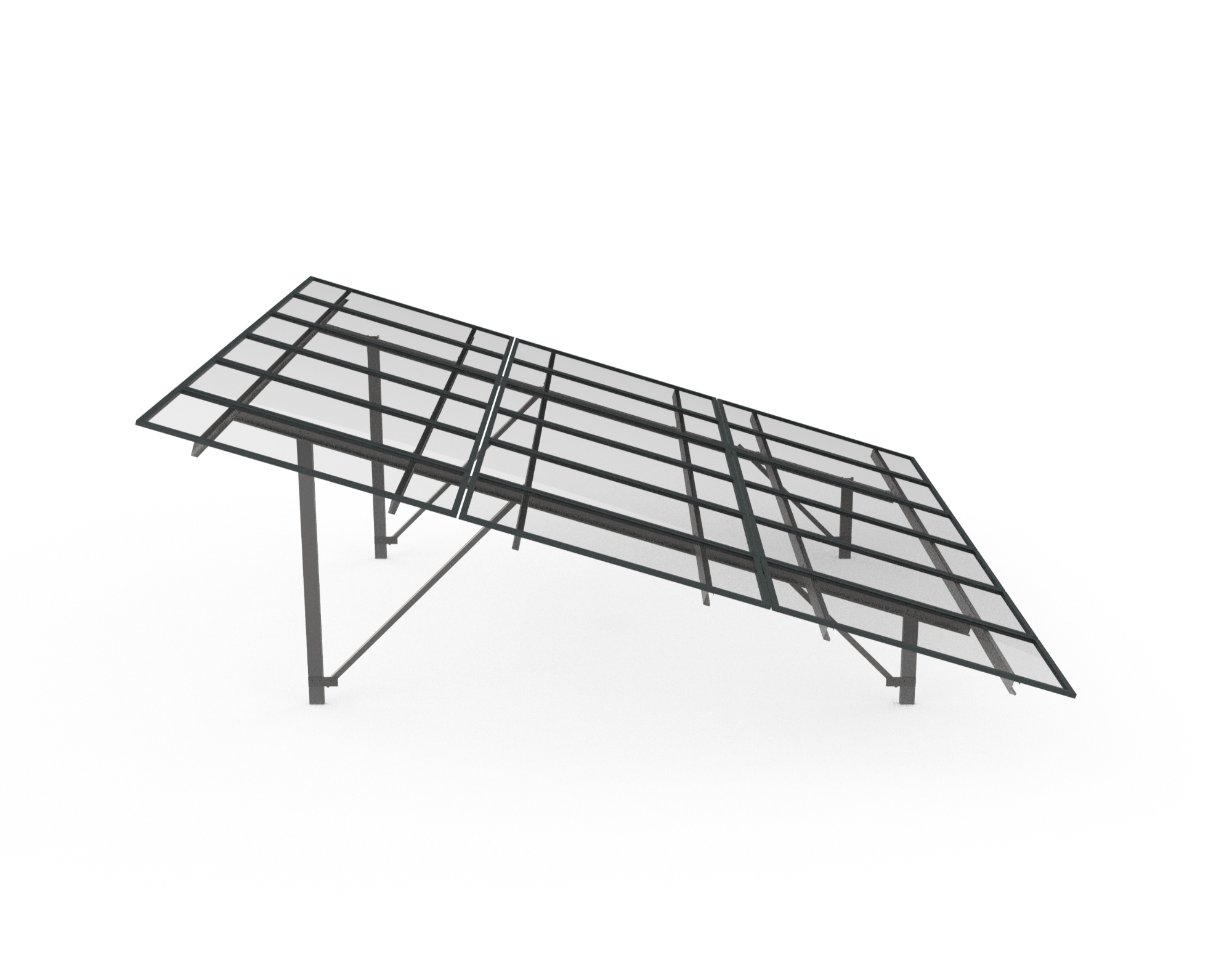
Introduction
Solar panel mounting structures play a critical role in ensuring solar systems operate efficiently and safely for decades. This guide covers key types of solar mounting structures, components, materials and considerations.
Why Mounting Structures Matters
Proper mounting enables solar installation across locations like residential rooftops, warehouses and solar farms. It secures panels at the best angle to maximize solar absorptions and energy output based on factors like sun exposures and climate. Mounts protect panels from weather like wind, rain and snow over 20-25 year lifecycles. Flimsy structures risk system failures or safety issues over time.
I. Types of Solar Mounting Structures

There are several main types of solar mounting structures used to install solar panels. Selecting the right mounting solution is crucial, as it impacts the overall efficiency, durability, and generation capacity of the system. The structure must also be stable enough to withstand wind, rain, hail, snow, and even moderate earthquakes.
The 5 primary solar mounting structure types are:
- RCC Roof Mounts
- Ground Mounts
- Solar Carports
- Shed Mounts
- Tracking Structures
RCC Roof Mounts
RCC stands for Reinforced Cement Concrete. These mounting structures are used to install solar panels onto concrete rooftops.
Benefits:
- Reduce DC losses from long cable runs to inverter
- Utilize unused roof space for clean energy generation
- Protect roof from weather exposure
- Common in residential and commercial installs
Drawbacks:
- Require roof penetration which can lead to leaks if not properly sealed
- Need proper roof orientation and shadow free area
- Difficult to scale system size due to roof space limitations
RCC mounts are ideal when there is adequate roof space available. They can also be paired with solar trackers.
Ground Mounts
Ground mounts place solar panels directly on the ground rather than the roof. This is a good option when:
- Insufficient roof space
- Excessive shade from trees
Benefits:
- Accommodate larger system sizes
- Enable easier tracking system installation
- Avoid house modifications
Drawbacks:
- Higher installation costs
- Need large shadow-free land area
- Risk of vandalism and debris/snow accumulation
Ground mounts should only be installed in secure, debris-free locations.
Solar Carports
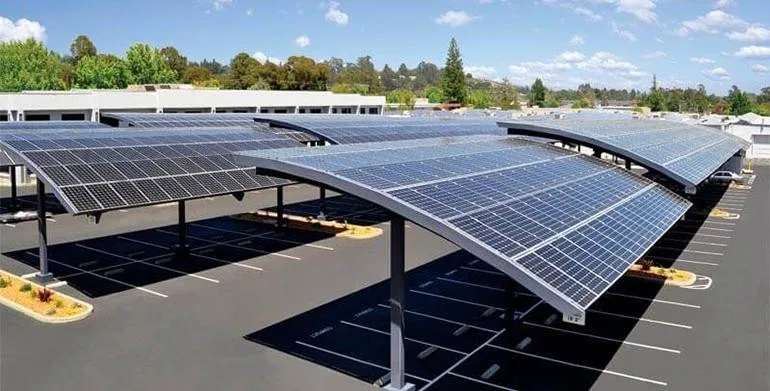
Carport structures elevate solar panels on poles to create a covered parking area underneath.
Benefits:
- Provide shade for vehicles
- Utilize parking area for clean energy generation
- Can incorporate EV charging stations
Drawbacks:
- Higher installation costs
- Require significant shadow-free land
Shed Mounts
Shed mounts fasten solar panels onto shed rooftops or sheet metal roofing. They are often used by commercial and industrial facilities.
Benefits:
- Low installation costs
- Easy maintenance
- Leverage unused roof space
Drawbacks:
- Prone to overheating, reducing system efficiency
- Require shadow-free roof area
In-Roof solutions can solve overheating issues by replacing sheet roofing entirely.
Tracking Structures
Tracking structures automatically pivot solar panels to follow the sun’s path for maximized exposure. The two types are:
- One-axis track east to west movement
- Two-axis track seasonal movement for concentrator systems
Benefits:
- Boost efficiency during peak sunlight hours
- Enhance limited space utilization
- Avoid panel shading
Drawbacks:
- High installation costs
- Complex installation/maintenance
- Risk of breakdown
While trackers improve efficiency substantially, their higher costs and complexity limit adoption.
II. Fixed Tilt Solar Mounts
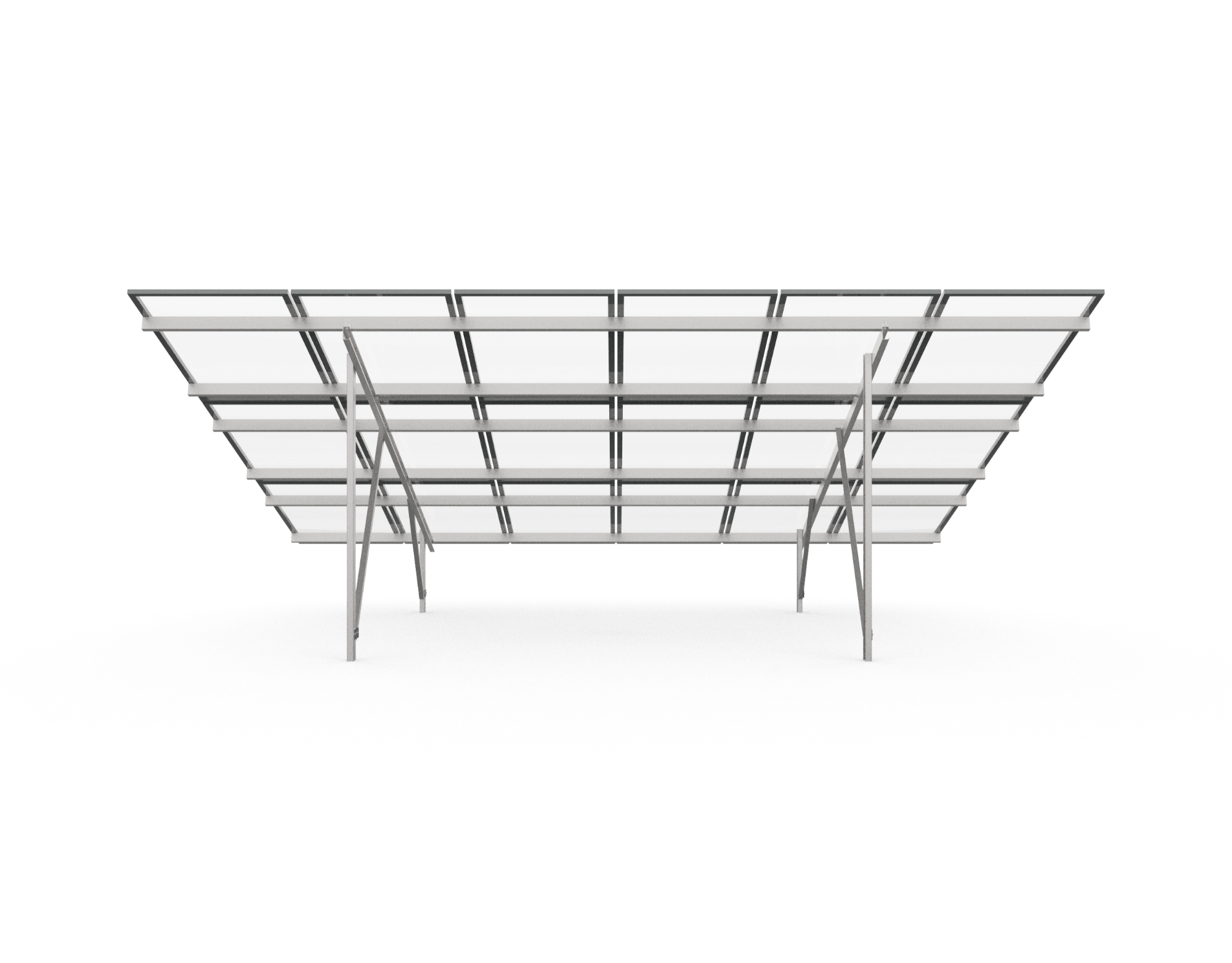
Fixed tilt solar mounts are the simplest and most cost-effective type of solar mounting structure. As the name suggests, these mounts hold solar panels at a constant angle throughout the year, optimized for the latitude to capture maximal sunlight.
Benefits
- Cost-Effective
- Inexpensive materials and simple installation lower overall system costs
- Easy Maintenance
- Does not require seasonal adjustments, reducing maintenance needs
Constant Angle
- Tilt angle optimized for location’s latitude ensures efficient sunlight capture
While fixed tilt mounts maximize productivity in regions with consistent solar resource, they are less ideal for areas with variable sunlight.
| Type | Description |
| Residential | Well-suited for home installations |
| Commercial Rooftops | Commonly used to mount solar panels on flat warehouse and office roofs |
| Solar Farms | Can be used but tracking systems may improve performance |
Key Considerations
- Area must receive consistent annual solar exposure
- Lifetime productivity partially depends on tilt angle accuracy
- Not suitable for regions with diverse terrain that creates variability
Overall, fixed tilt solar mounting provides a reliable, low-cost mounting solution for residential and commercial rooftop solar installations in locations with steady sunlight availability. Their simplicity makes them a popular choice when roof space is sufficient.
III. Solar Tracking Systems
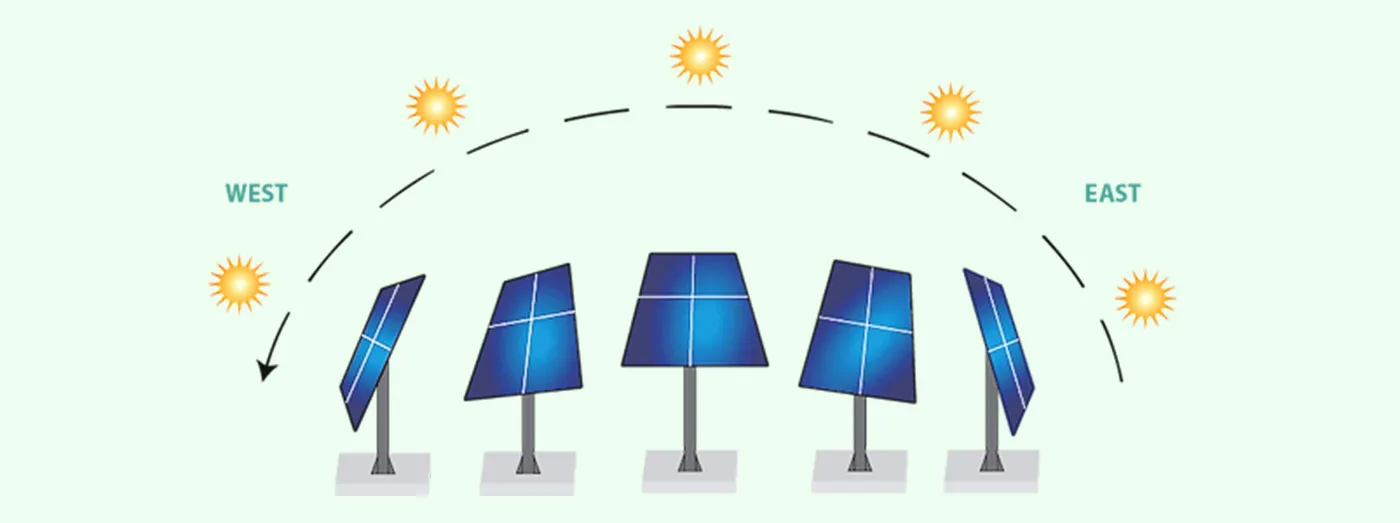
Solar tracking systems automatically pivot solar panels to follow the sun’s path across the sky, adjusting the orientation to maximize sunlight exposure. There are two main types of solar trackers:
- Single-Axis Trackers: Rotate along one axis, typically east-west to track daily movement
- Dual-Axis Trackers: Rotate along two axes to track both daily and seasonal sun positions
| Type | Description |
| Single-Axis | Increases output up to 30% over fixed tilt |
| Dual-Axis | Maximizes energy production but higher complexity and costs |
Solar tracking enables substantial generation improvements compared to fixed mounting, especially in areas with high direct sunlight. Although trackers require more investment upfront, the energy yield enhancements often provide an attractive return on investment. Overall, tracking systems are most cost-effective for large-scale installations.
IV. Mounted Roof Racks
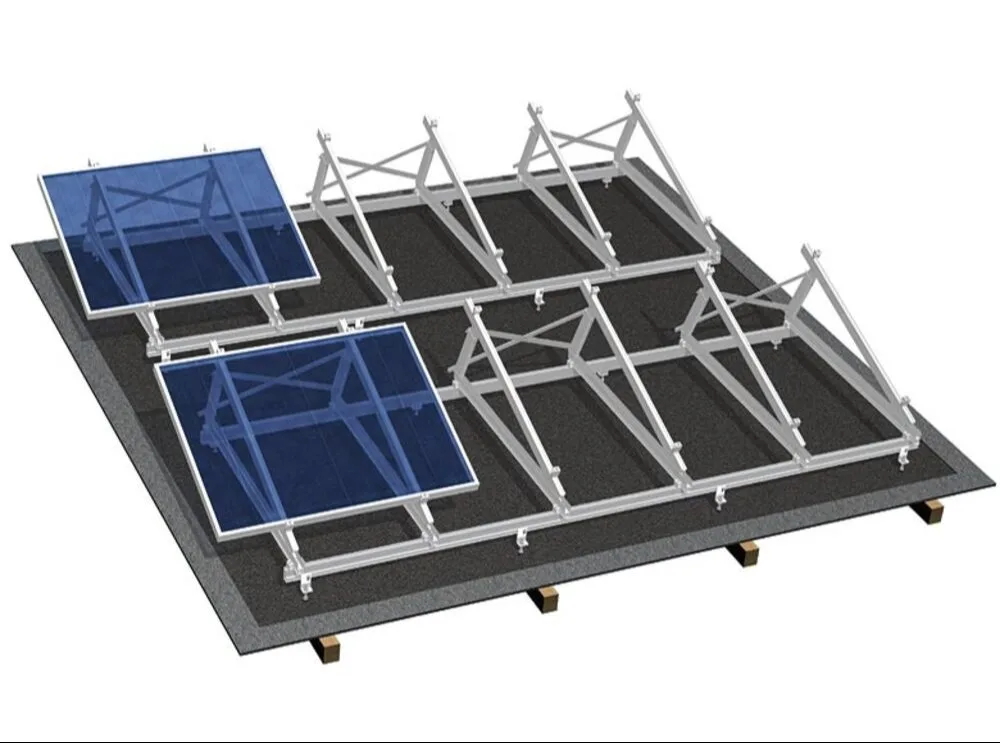
Mounted roof racks are solar mounting structures installed directly onto roof surfaces. These racks:
- Prevent DC Losses: Minimize wiring distances between solar panels and inverters
- Require Roof Penetration: Attach to roof rafters using lag bolts that penetrate roof
Key Benefits:
- Utilize unused roof space for solar generation
- Rooftop installation reduces land usage
- Concrete roof provides structural integrity
- Protect roof from weather exposure
- Enable customized system sizing
| Type | Description |
| Residential | Most common rooftop mounting technique |
| Commercial | Widely used on flat warehouse/office roofs |
Potential downsides include roof leaks if improperly sealed and limitations on system expansion. Overall, mounted roof racks provide a convenient mounting solution for residential and commercial rooftop solar.
V. Ground-Mounted Racks
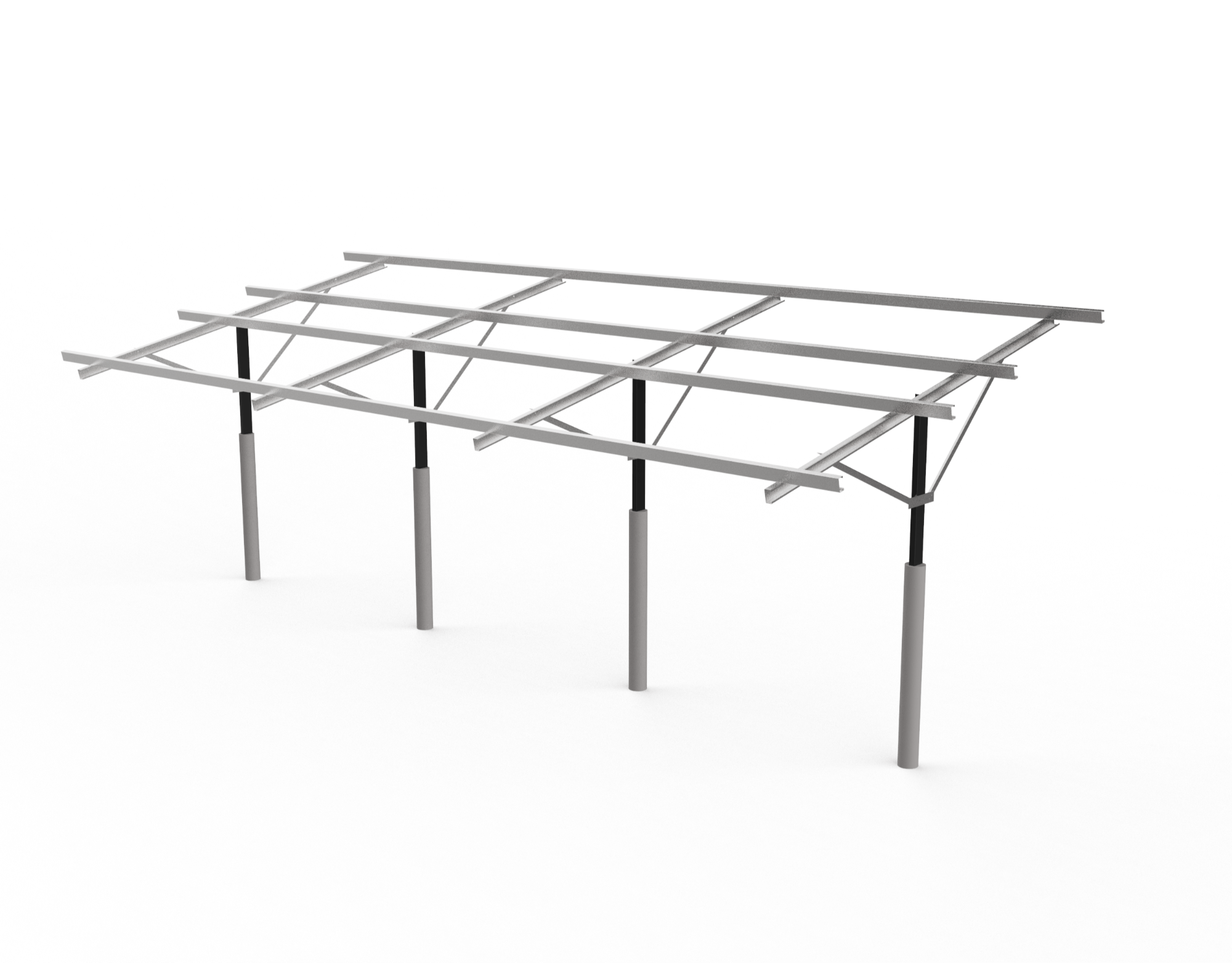
Ground-mounted racks refer to solar mounting structures installed directly into the ground rather than on rooftops. Key features:
- Adjustable tilt angles to optimize orientation
- Enable expansive solar farms on open land
- Secure locations reduce risk of damage/theft
Benefits include:
- No rooftop limitations on system size
- Easy to clean around arrays
- Flexible panel positioning
However, ground-mounted arrays have higher wind loads, require more space, and installation costs can be higher than rooftop systems. Overall, their flexibility makes ground mounts ideal for large-scale installations.
VI. Top of Pole Mounted Racks

Top of pole mounted racks refer to solar panel mounting structures fixed atop poles rather than rooftops or ground mounts. There are two sub-types:
- Top-Pole: Panels mounted directly on top of a pole
- Side-Pole: Panels attached to the side of poles
These pole-mounted solar solutions are optimal for small scale applications like:
- Rural and agricultural installations
- Off-grid auxiliary power
- Solar lighting arrays
Their simplicity makes pole mounts a versatile solar mounting option.
VII. Tracking-System Mounted
Tracking-system mounted racks automatically orient solar panels to follow the sun’s path for maximum exposure. The key benefits include:
- Solar Tracking – More energy generation than fixed mounts
- Solar Water Pumping – Optimal for pumping applications
- Mitigate shading losses
- Utilize limited space more efficiently
However, trackers have higher complexity, installation costs, and risk of breakdowns. They are most practical for large-scale systems where the boost in energy production offsets the extra expenses. When sized appropriately, tracked solar mounts maximize solar utilization.
VIII. Components
Solar mounting structures consist of various components including:
- Brackets: Made of stainless steel or aluminum to mount panels
- Clamps: Attach to solar panel joints
- Channels: Interconnect components and carry weight
- Screws: Secure structure and panels; more screws increase mounting efficiency
Having high-quality and durable components is vital for structural integrity. Proper installation of these parts enables optimal sunlight capture.
IX. Installation Methods
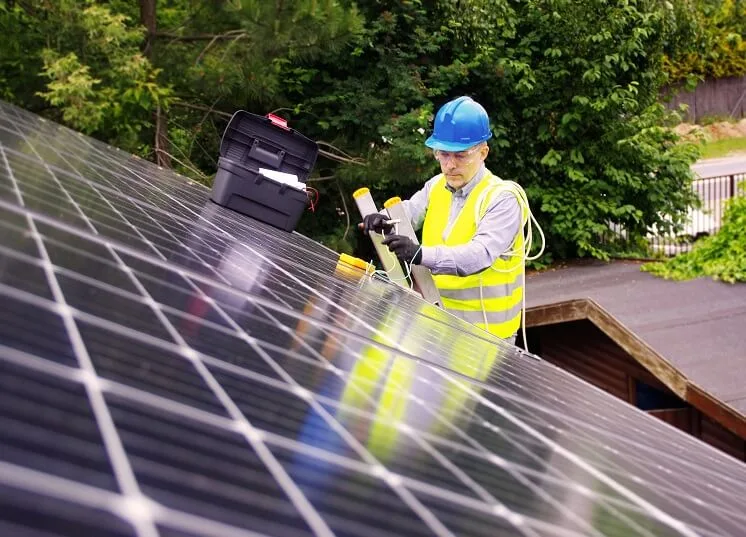
There are three main solar panel installation methods:
- Rooftop: Panels mounted on concrete roofs or slabs
- Ground: Structures built on open land or fields
- Pole: Panels attached to top or sides of poles
Proper installation is key for maximizing sunlight exposure and energy generation. It also impacts system efficiency, durability, and maintenance needs. The method chosen depends on space requirements, orientation needs, and structural considerations.
X. Materials
Common solar mounting structure materials:
- Aluminium: Corrosion-resistant, lightweight
- Steel: Very durable but expensive
- Wood: Cheap but weaker and prone to failure
- Plastic: Affordable but suboptimal lifetime
The right material is crucial for structural integrity and preventing system failures under pressure (e.g. snow, hail). It must withstand the installation environment and last the system lifetime of 20-25 years. Aluminium is commonly used for its strength, lightweight nature, and compatibility with solar module frames.

